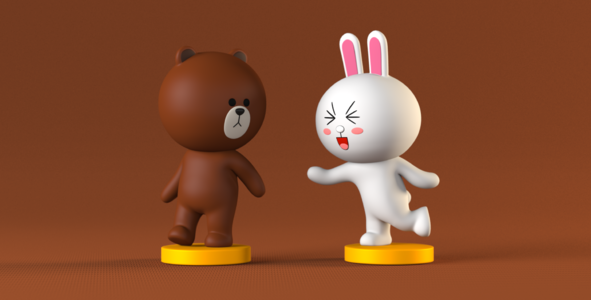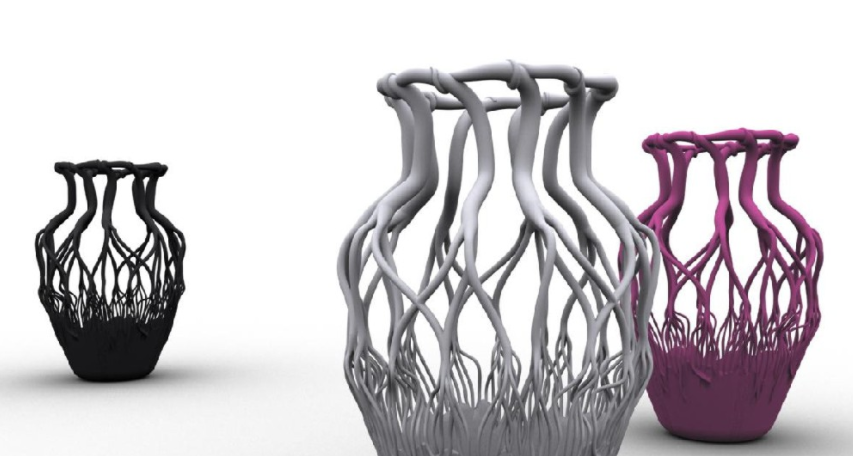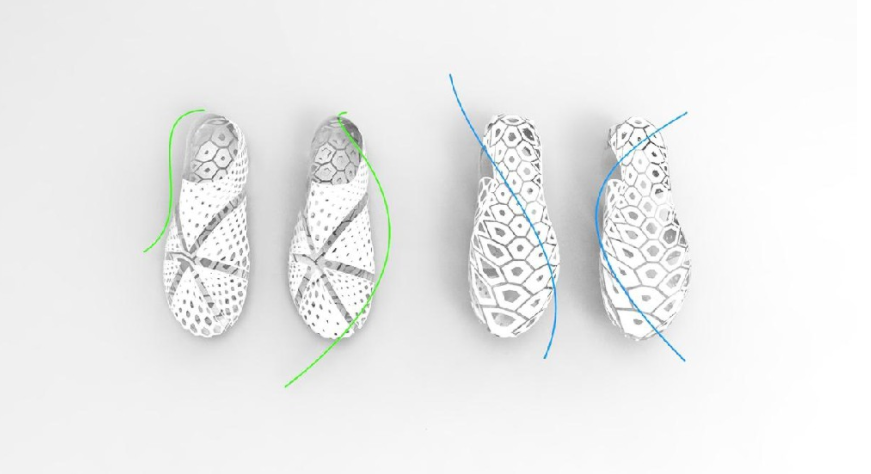熱門關(guān)鍵詞:上海雕塑 上海3D打印 美陳制作 廣告道具 浮雕制作 道具制作 櫥窗展示
行業(yè)應(yīng)用
聯(lián)系我們
有條有理(上海)道具有限公司
聯(lián)系人:韋經(jīng)理
郵 箱:1156743471@qq.com
電 話:155-8880-8889
地 址:上海市青浦區(qū)紀(jì)鶴公路5348號北3層
冀教版四年級英語上冊教案(二)

Lesson10 Brush and Wash
教學(xué)目標(biāo)
知識目標(biāo) 1.學(xué)生能聽懂、會說 2.學(xué)生能認(rèn)讀 能力目標(biāo) 在日常生活中注意觀察,并用簡單的英語對話 情感目標(biāo) 在每天的生活中試著模仿和運(yùn)用英語 重點(diǎn) 同知識目標(biāo)1—2 新|課 |標(biāo)|第 |一| 網(wǎng) 難點(diǎn) 運(yùn)用下列用語和句子: I brush myteeth. I wash my face. I brush my hair. I put on my clothes. 教具 教學(xué)光盤 教學(xué)過程 Ⅰ. Class opening and review Greeting. What do you do in your bedroom? 復(fù)習(xí) (1)時間詞:morning ,afternoon,evening Lesson hook:我們起床并為新的一天做準(zhǔn)備 Ⅱ. New concepts: 1. What do you do in the morning? 課件分別出示brush my teeth T:What do you do inthe morning? 第一幅圖brush my teeth:領(lǐng)讀短語后 其余三幅圖都以此方法進(jìn)行 播放錄音 練習(xí):耳語游戲 四名志愿者到教室前站成一排,按照順序 2. Let’s do it! (2)Read and match. 大聲閱讀句子 鞏固檢驗(yàn)Check for understanding:活動手冊page24 Ⅲ. Class closing Good work today, class. Now we know how to say what do we do when wewake up in our bedroom every day. 板書設(shè)計(jì) Lesson10 Brush and Wash What do you do in the morning? I brush my teeth. I wash my face. I brush my hair. I put on my clothes. Lesson11 Toys 教學(xué)目標(biāo) 知識目標(biāo) 1.學(xué)生能聽懂、會說 2.學(xué)生能認(rèn)讀 We playcatch with a ball. Jenny plays with her toys. 3.學(xué)生能理解字母組合sh,ch 能力目標(biāo) 會用所學(xué)新句型進(jìn)行語言交際 情感目標(biāo) 在每天的生活中試著模仿和運(yùn)用英語。 重點(diǎn) 同知識目標(biāo)1—2 難點(diǎn) playwith與play… with的區(qū)別與應(yīng)用 教具 教學(xué)光盤 教學(xué)過程 Ⅰ. Class opening and review Greeting. What do you do no Saturday? 卡片復(fù)習(xí)一星期七天的詞匯,并談?wù)撔瞧诹幕顒印?/span> 出示圖片 Lesson hook:今天我們學(xué)習(xí)與玩耍有關(guān)的英語短語及句子 Ⅱ. Newconcepts: 1. What do you do no Saturday? 板書單詞:toy, ball, kite,讓志愿者拿出實(shí)物(玩具 (2)學(xué)習(xí)play:用多種方法解釋概念 Let’s play with this ball. Let’s play with these toys. (3)看書第一部分,播放光盤,并討論發(fā)生了什么。出示問題:What day is it? What do Li Ming, Jenny andDanny do first? What do Li Ming, Jenny and Danny do last? Practice 練習(xí):4人小組學(xué)習(xí),一名學(xué)生問:What do you do no Saturday?其他學(xué)生輪流說做什么,并使用在本課中學(xué)到的新單詞和新短語。 2. Let’s do it! Group work. Ask and answer. 學(xué)生看書,老師解釋如何做活動。讀一讀例句,然后分小組進(jìn)行問答。What do you do noSaturday? I… 3. Letters and sounds 鞏固檢驗(yàn)Check forunderstanding:活動手冊page26 Ⅲ. Class closing Now, let’s play with our toys. 留幾分鐘給學(xué)生玩,并祝賀他們今天的學(xué)習(xí)和表現(xiàn)。 板書設(shè)計(jì) Lesson11 Toys toy, ball, kite What do you do on Saturday? I play with my friend. Wefly kites. We play catch with a ball. Jenny plays with her toys. Lesson 12 John and Jack 教學(xué)目標(biāo) 知識目標(biāo) 1.學(xué)生能夠聽懂和理解這個簡單的故事。 2.學(xué)生能就故事進(jìn)行提問和回答 3.學(xué)生能夠分角色,并用自己的語言表演故事 能力目標(biāo) 在日常情境中注意觀察 情感目標(biāo) 在每天的生活中試著模仿和運(yùn)用英語。 重點(diǎn) 同知識目標(biāo)1-2 難點(diǎn) 同知識目標(biāo)3 教學(xué)過程 Ⅰ. Class opening and review Greeting:What do you do onSaturday? Lesson hook:過去的一周我們都非常努力 Ⅱ. New concepts:Story time: John and Jack 讀前活動Prepare to read:看圖討論Look and talk about it. 看教科書28頁 Where is the boy? What’s the boy doing? What can you see from thesepictures? 閱讀活動Read the story:依次瀏覽每幅圖 Panel 1: What’s the boy’s name? Who isJack? What is Jack doing? Panel 3: What do you see in this picture? 舉起筷子 Panel 4: What do they do in the afternoon? Panel 5: What is the boy playing with? Panel 6: What happens now?(John throws the ball and it goes in to thegrass. He can’t find it.) Panel 7: What do you see in the grass? Panel 8: What do you see in the picture? Are they happy? Why? 大聲朗讀Read aloud: 1.教師范讀,速度要慢,輔以動作和手勢。適時解釋個別不懂的單詞。 2.播放光盤,學(xué)生大聲跟讀,讀出韻味。 讀后活動After reading: 用漢語復(fù)述故事。 分角色表演故事。3人一組,一人旁白,一人表演杰克,一人表演約翰。給學(xué)生一些時間來練習(xí)語言和動作,然后在全班展示。 Ⅲ. Class closing:Good-bye! 板書設(shè)計(jì) Lesson 12 John and Jack John—Jack—good friend have breakfast—brush histeeth play catch with a ball—see abird —put the bird up in the tree Again, please! 教學(xué)目標(biāo) 知識目標(biāo) 1.學(xué)生將完成五項(xiàng)活動來證明他們各自的聽、說、讀、寫技能。 2.學(xué)生將完成一個表明在此單元他們進(jìn)步程度的自我評價表。 能力目標(biāo) 1.學(xué)生養(yǎng)成和提高基本的學(xué)習(xí)策略。2. 在日常情境中注意觀察,并用簡單的英語對話。 3.學(xué)生養(yǎng)成聽錄音和跟讀句子的習(xí)慣。 情感目標(biāo) 培養(yǎng)對英語的興趣和學(xué)習(xí)英語的好奇心。 重點(diǎn) 同知識目標(biāo)1-2 難點(diǎn) 識記本單元的四會單詞及所學(xué)句型,并能熟練運(yùn)用。 教具 教學(xué)光盤、本單元動詞短語的卡片或圖片 教學(xué)過程 Greeting Lesson hook:今天我們對第二單元所學(xué)知識進(jìn)行復(fù)習(xí)歸納。 1. Listen and talk. (1)使用本單元動詞短語的卡片或圖片,復(fù)習(xí)疑問句:What do you do onSaturday/Sunday? (2)看課本30頁第一部分,播放光盤錄音學(xué)生跟讀。 (3)回答問題:What do they do on Sunday? 2. Listen ,match and colour. 將聽到的句子與星期連線。錄音內(nèi)容: (1) I sing songs on Wednesday. (2) I read books on Monday. (3) I draw a picture on Friday. (4) I talk on the phone with my friends on Tuesday. (5) I help my mum and dad on Thursday. (6) I make my bed on Sunday. (7) I play on the computer on Saturday. 看書31頁第三部分,說說每一幅圖片內(nèi)容,讀一讀句子和單詞,再選擇填空。 4. Look, talk and tick. 看圖片,讀對話,在正確圖片中打?qū)础?/span> 5. How am I doing? 自我評價:學(xué)生需要判斷自己在學(xué)校及在家中聽說讀寫各方面做得怎樣,根據(jù)實(shí)際涂上星星。 10—12顆星為A,7—9顆星為B,1—6顆星為C。 Ⅱ. Class closing 下次見面我們將學(xué)習(xí)新單元,那時我們的聽、說、讀、寫各方面將會更好。 板書設(shè)計(jì) Again, please! What do you do onSaturday/Sunday? I _____________. Lesson13At school 教學(xué)目標(biāo) 知識目標(biāo) 1.學(xué)生能聽懂、會說、認(rèn)讀并書寫詞匯:school, classroom,library, playground, where 2.學(xué)生能聽懂、會說下列句子:Where’s the computer room? I can show you. 能力目標(biāo) 在日常生活中注意觀察,并用簡單的英語對話。 情感目標(biāo) 1.培養(yǎng)對英語的興趣和學(xué)習(xí)英語的好奇心。 2.找機(jī)會練習(xí)學(xué)生的聽力技巧。 重點(diǎn) 同知識目標(biāo)1—2 難點(diǎn) 特殊疑問詞where的用法 教具 教學(xué)光盤、school, classroom, library,playground的圖片或課件 教學(xué)過程 Ⅰ. Classopening and review Greeting. Hello, class! Welcome to our classroom. Lesson hook:我們學(xué)習(xí)新的單元。 今天我們將會了解學(xué)校,并學(xué)會在學(xué)校附近如何找到路。 Ⅱ. New concepts: 1.My school (1)教授新單詞school,classroom, library, playground 課件出示和平東路小學(xué)正門教學(xué)樓圖片,問:What do you see in thepicture?(生:學(xué)校大樓)出示并板書單詞school,拼讀并記憶s-c-h o-o-l----school. 下面讓我們一起來參觀一下我們的學(xué)校吧!其余三個單詞也用以上方法教學(xué)。 (2)教師演示用新詞匯組成對話:Look! This is my school/classroom/ library/ playground/ computer room/science lab/ skilled/ music room/ art room/ dance hall. Your____is(looks)great. (3)練習(xí):角色扮演:學(xué)生甲:Look! This is our library. 學(xué)生乙:It looks great! 2.Where is the computer room? (1)看書35頁,討論圖片情節(jié):How to Jenny ask the way? (2)播放錄音跟讀第二部分。 (3)強(qiáng)調(diào)禮貌用語的重要性:同Thank you 和You’rewelcome一樣,Excuse me也是常見的禮貌表達(dá)方法。 練習(xí):角色扮演: 甲:Excuseme.Where’s the classroom/ desk…? 乙: I canshow you. Here it is. 甲:Thanks. 乙:You’re welcome. 3.Let’s do it! 鞏固檢驗(yàn)Check for understanding:活動手冊34 Ⅲ. Classclosing 教師問一個同學(xué): Where’s the door? 板書設(shè)計(jì) Lesson13At school Where’sthe school/classroom/ library/ playground? I canshow you. Lesson14 Near and Far 教學(xué)目標(biāo) 知識目標(biāo) 1.學(xué)生能聽懂、會說、認(rèn)讀并書寫詞匯:near, far, from, the 2.學(xué)生能認(rèn)讀、理解并運(yùn)用下列基本句型結(jié)構(gòu):…is near… …is farfrom… 3.學(xué)生能聽懂、會說下列句子:Is it far from here? No, it’s near. 能力目標(biāo) 在日常生活中注意觀察,并用簡單的英語對話。 情感目標(biāo) 1.培養(yǎng)對英語的興趣和學(xué)習(xí)英語的好奇心。 2.找機(jī)會練習(xí)學(xué)生的聽力技巧 重點(diǎn) 同知識目標(biāo)1—2 難點(diǎn) 知識目標(biāo)2 教具 教學(xué)光盤 教學(xué)過程 Ⅰ. Class opening and review Greeting Hello, class! Welcome to our classroom. Where’s the school/classroom/ library/ playground? 讓學(xué)生回答:I canshow you. Lesson hook:今天我們學(xué)習(xí)學(xué)校中的路線 Ⅱ. New concepts: 1.Near or far? (1)教授near和far的含義 (2)使用一個物品(一本書或一個桌子),通過指和說來展示近和遠(yuǎn) 練習(xí):示范展示: 通過將物品擺放的離教師遠(yuǎn)或近進(jìn)一步展示:Is itnear? Or is it far? 2.Is the library far from here? 看書37頁 What is happening? What’s Li Ming doing? Where does he want to go? Who does he ask for help? Is thelibrary near or far? 再次播放錄音并看書跟讀 練習(xí):(1)示范展示:志愿者扮演李明和教師練習(xí)對話。 (2)小組活動:利用單詞卡classroom/ library/ playground等 甲:Where’s the classroom/ library/ playground? 乙:I can show you. 甲:Is it near or far fromhere? 乙:It is far from here. 3.Let’s doit! Pair work. Point and talk. Ⅲ. Class closing 教師問同學(xué):Is the playground near or farfrom our classroom? 板書設(shè)計(jì) Lesson14 Near and far This ___is near. That __ is far. Is it far from here? No, it’s near. Lesson15In the city 教學(xué)目標(biāo) 知識目標(biāo) 1.學(xué)生能聽懂 2.學(xué)生能聽懂、會說下列句子:Where is the zoo? Go straight and turn left. 能力目標(biāo) 在日常生活中注意觀察,并用簡單的英語對話。 情感目標(biāo) 1.找機(jī)會練習(xí)學(xué)生的聽力技巧。 2.在每天的生活中試著模仿和運(yùn)用英語。 重點(diǎn) 同知識目標(biāo)1—2 難點(diǎn) 聽懂指令并做動作:go straight, turn left, turn right 教具 教學(xué)光盤、前一課的卡片、street,go straight, turn left, turn right的卡片,城市city、街道street與建筑課件 教學(xué)過程 Greeting Hello, class! Where’s the school/classroom/library/ playground? 讓學(xué)生回答:I can show you.Is the library/ playground near or far? Lesson hook:你迷過路嗎?這是很可怕的,但是不要擔(dān)心,今天我們來學(xué)習(xí)當(dāng)你不知道如何到達(dá)某地時怎樣找到路。 Ⅱ. New concepts: 1. Where is the zoo? (1)出示課件學(xué)習(xí)city : What’s this? (city) What do yousee in the city?(car, bus, people, shop) 展示street圖片 舉起直行的卡片 (2)播放第一部分錄音,學(xué)生看書跟讀 (3)回答問題 課件出示答語:Go straight andturn left.There’s the zoo. (4)練習(xí) 2. Let’s do it! Pair work. Point and talk: Where is the school/ library/ restaurant/zoo? 回答時要運(yùn)用go straight, turnleft, turn right 3. Let’s chant! 看書39頁第三部分 鞏固檢驗(yàn)Check for understanding:活動手冊38頁 Ⅲ. Class closing 板書設(shè)計(jì) Lesson 15 In the city go straight turn left turn right Lesson16 Cars and buses 教學(xué)目標(biāo) 知識目標(biāo) 1.學(xué)生能聽懂 2.學(xué)生能認(rèn)讀 3.學(xué)生能夠從20數(shù)到30. 4.學(xué)生能夠辨認(rèn)20到30的數(shù)字形式和書寫形式 能力目標(biāo) 在日常生活中注意觀察,并用簡單的英語對話 情感目標(biāo) 1.找機(jī)會練習(xí)學(xué)生的聽力技巧 2. 在每天的生活中試著模仿和運(yùn)用英語。 重點(diǎn) 同知識目標(biāo)1-3 難點(diǎn) 同知識目標(biāo)2 教具 教學(xué)光盤 教學(xué)過程 Ⅰ. Class opening andreview: Greeting Hello, class! Please gostraight/ turn left/turn right! Ⅱ. New concepts: 1. How do you go to school? (1)教授新單詞bike, taxi, car,bus 談?wù)勅藗內(nèi)ジ鞯氐姆绞?div id="m50uktp" class="box-center"> 。問:How did you getto school today? What are some ways for us to get around? What is your favoriteway? 課件(或卡片)出示bike, taxi, car,bus (2)分別出示第一部分四幅圖 依次出示句子:I go to school bybike. I go to the zoo by taxi. I go to the restaurant by car. I go home by bus.播放第一部分光盤錄音,看書跟讀 (3)練習(xí) 2. Numbers 板書數(shù)字1-20,按順序讀后 板書數(shù)字 20-30 重點(diǎn)指導(dǎo)單詞thirty的讀音 練習(xí):Let’s count from1—20 and count from20—30 3. Let’s play! Count bythree. 讓學(xué)生看書,解釋游戲方法 Three—Six—Nine—Twelve—Fifteen—Eighteen—Twenty-one--Twenty-four 鞏固檢驗(yàn)Check forunderstanding:活動手冊40頁。 Ⅲ. Classclosing. How do you go home today? 板書設(shè)計(jì) Lesson16 Cars and buses How do you go to school? I go to______ by______. twenty-six, twenty-seven, twenty-eight, twenty-nine, thirty Lesson17 I’m lost 教學(xué)目標(biāo) 知識目標(biāo) 1.學(xué)生能聽懂 2.學(xué)生能理解字母tr, dr, ck, qu, ing在單詞中的發(fā)音及其規(guī)則。 3.學(xué)生能夠辨認(rèn)和正確安全地對三種顏色的交通燈做出反應(yīng) 能力目標(biāo) 在日常生活中注意觀察 情感目標(biāo) 1.找機(jī)會練習(xí)學(xué)生的聽力技巧 2. 在每天的生活中試著模仿和運(yùn)用英語 重點(diǎn) 同知識目標(biāo)1-2 難點(diǎn) 理解課文第二部分,并在第三部分正確全出公共汽車站







